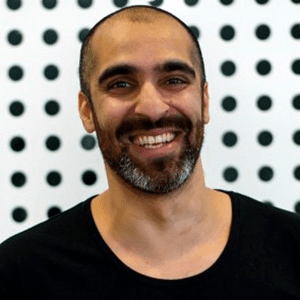

#17: ‘Always in the white water’ – who copes with change better? Women or men, older or younger?
Colin Chodos shares his insights into what you can do, as a leader or manager, to help individuals, teams and the organisation navigate that change.
The rate of change is driven by technology and advances in technology which is fast becoming exponential.
Capability of change and to change and can be a competitive advantage. It’s all about resilience and mindset.
Five main reasons that people resist change in an organisation:
- No communication of the underlying business reason for change
- Fear of job loss – if so disclose early and be very clear
- Expectation of new skills associated with change and fear of capability
- Comfortable with status quo
- Expected to do more for less
Great change leaders focus on people and process. Colin shares his tips on how to drive successful cultural change and what to look out for on the way.
Stephanie: Today we’re welcoming to TEC Live, Colin Chodos. Colin is a director of Corporate Connection Strategies, a specialist consulting company that assists organisations with strategy, change management and people development. He’s actively involved at board and senior executive level in facilitating and implementing change and strategic initiatives for organisations. Colin, welcome to TEC Live.
Colin: Thank you, Stephanie.
Stephanie: I’ve had you facilitate I think it was at something maybe the year before last at an event I was holding and at lunchtime I said, ‘can you go in and facilitate this session please this afternoon’ and you are great on your feet. Great to have you here Colin.
So when we talk about culture and we talk about change, it makes my mind go back to, was it 2000 or 2001 when Who Moved My Cheese came out and it was kind of, everyone got so excited about it because change was the thing and corporations talked about change. Well it hasn’t shifted since then has it?
Colin: Interestingly I think the world we live in today is incredibly effected by the rate of change, the advent of technology and stating the obvious and those that were involved in the development of the Intel chip, and I forget his name immediately, but they predicted and he predicted that in the early sixties if my timing is right, that the rate of change is going to be equivalent to the speed at which technology advances, which is an exponential curve and how our world is affected by that has been proven true.
Stephanie: Is this Moore’s law you’re talking about? I’ve heard a lot of people say that it’s sped up from what he was saying, it’s kind of even faster now almost. Given that in 2000 companies were thinking they were dealing with change and the advances in technology have been incredible since then. How’s that affecting individuals in an organisation?
Colin: Great question. Let’s take it first of all broader to the organisation itself perhaps, and then I’ll bring it back to our experience and my experience in terms of the psychology of change at an individual level and then perhaps link that to what can we as leaders do and managers do, who are accountable for helping organisations navigate that change.
Stephanie: So that’s great. Why don’t you start by talking about the organisation, that sounds good.
Colin: I went into a business a couple of years ago and in their lobby they had a statement on the wall and the statement and the language in parentheses, {Always in the white water} and I asked them about that and they said that this was their culture and they use that statement of always being in the white water to assess people that were joining them. In other words, if you couldn’t cope as an individual with rapid change, with flexibility, with the ability to adapt, then you were wrong for the organisation, irrespective of your current capability set. They spoke about it saying that your job today will be different tomorrow and that’s the expectation we have of you, link that to what I believe the capability of change and the capability to change, today for me is a competitive advantage. The ability to react to the market, the ability to react to innovation, the ability to actually drive the change that’s required once you’re aware that you know what to do.
Stephanie: So I want to just go back to that {Always in the whitewater} it’s wonderful imagery isn’t it? But while you were talking, I thought it makes me feel somewhat anxious because I love pace and I love innovation, but aren’t you going to burn people out if you do that, a sustained approach like that?
Colin: I think the challenge for, and this goes back to leadership, is the ability to allow the teams to have confidence in where they’re headed. The ability to challenge themselves, the ability to feel comfortable and be held accountable for the pace or the rate of change that they’re undergoing. Continuous process improvement is change.
Stephanie: Yes that’s right, good things. We’ve just implemented a whole new system across the board. I mean there’s been pain associated with it as you’d expect but what’s wonderful now is starting to hear people saying, this is fantastic, look what I’ve discovered or this is great. So it’s positive and a strain on resources at the same time, isn’t it?
Colin: There’s an interesting a letter from purportedly from president Jackson in the States who was the seventh I think, President of the US. 18 hundreds mid 18 hundreds, there’s a letter from one of the governors, governor of New York, a gentleman by the name of Van Buren and he writes to the president saying that he wants to challenge the advent of the railroads because of the dangers they expect railroads to have against women and children because of the speed at which railroads travel, and also the fact that the potential railroad industry is going to leave whip and harness makers destitute who currently are producers for the horse and cart industry.
Stephanie: Wonderful example.
Colin: So the challenge that we have is that our world is not only being changing in some way, but the question I always ask people is, do you think older or younger people cope better with change?
Stephanie: And how do you answer that?
Colin: Let’s take it a step further. Do women or men cope differently with change? Do those that have experienced change previously cope better with the change, and what we’ve uncovered is that change is about resilience. So how do you learn resilience? Now, interestingly enough, children of families that have lived with parents in the defence force are probably one of the most resilient cohorts coping with change. Why? If you think about it, because they’ve had to change schools 10 or 12 times, now what’s the cornerstone of that and that resilience, they’ve had to build new relationships in order to have circles of friends.
Stephanie: We were talking about Jim Collins before, and that brings to mind a bit, his Stockdale Paradox of those kids fundamentally think it’ll be okay. I’m changing schools, it’s going to be okay. Instead of a child who’s been at the same school for eight years and you say, we’re changing schools and they’ve got no frame to operate within.
Colin: If you bring it from an organisations need to stay present and to stay relevant and to stay looking ahead continually. Lets for a moment look at what that impact is on the individual. The first thing when change occurs, first of all, let me go back a step. When I walk into the office, my expectation is of stability, my desk will be there, I’ll have my job, my pay packet will be available to me at the end of the week or the month. Now change occurs, whatever that is.
The research indicates that the first thing we as humans do is we go, what about me? They don’t ask the question, what about the company? Do they ask what is the impact on me? That builds a level of immediate resistance and that resistance turns to anxiety and concern. If that is not addressed immediately by managers and leaders, that then manifests itself in behaviour that actually gets in the way of productivity and actually can limit the impact that we have on the way an organisation functions, so we undermine what’s going on because we’re anxious, concerned about what’s going on for us and our families.
Stephanie: So I can see how that disconnect could happen because if a leader is driving change in response to something really positive or in response to some scary headwinds the business is going into, the leaders thinking of the vision, what needs to be done, they’re really excited, the big idea, that’s what they’re thinking. That’s miles away from someone thinking, but where will I log on now if you’ve changed the structure of the office or whatever.
Colin: I’ll make some other connects to this. There are five main reasons that people resist change within an organisation, this won’t surprise you. Number one reason is, no one has communicated to the teams the underlying business reason for the need for change. Let me give a practical example. We have to shift our premises. The anxiety for individuals is around, I now have to catch a different bus, I can’t get there, where are we going to now be located?
Stephanie: Where’s breakfast, where’s lunch?
Colin: There are fundamental questions, but no one has really explained that our lease expired and we couldn’t actually renew the lease, so it wasn’t a decision we made because we wanted to, it was a decision we made because we had to. Now if you extend that principle, that’s all about communication, so you’re quite right, as leaders we think about the big picture, the things that are impact impacting our P and L and our balance sheet and yet at the same time the human element, which is fundamental to the way in which we act and behave within the organisation, we often forget that there’s a cohort of people that don’t have visibility to the reasons why we making decisions.
Stephanie: Colin, that’s so right because the decision that the lease expired that we’ve tried to negotiate it, that we’ve had a look at alternatives, that’s been going on for months and by the time the decision is made, we’re moving, we’ve found someone, its old news for the leader.
Colin: Not only that, the senior team have processed all of that in how that affects them.
Stephanie: Totally, because you thinking, and the senior team is saying I don’t want to cross whichever bridge they don’t want to cross. I don’t want to cross the bridge, so can we make it here? We’ve all been through all of that, so by the time you announce it to the team you’re also trying to put a positive spin on it, aren’t you? Because the default as a leader is let’s make this, this is good guys, how exciting, we’ve got this new place and we’ll have hot desking and isn’t great, everything’s going to change. What a positive thing cause the leader’s trying to be upbeat about it.
Colin: Let’s add a second layer to that. The second reason people resist change is because there’s a fear of, perhaps I’m going to lose my job, so we forget to tell people that the change that’s occurring is not going to be a threat necessarily to anyone’s role. Now if there is, one of the best experiences I’ve observed is where that is disclosed as early as possible with as much transparency as possible in order to allow the organisation to adjust to the new paradigm, but many leaders are fearful for having those kinds of robust, clear, transparent conversations, so it creates additional anxiety and that then manifests in behaviour which undermines the organisation and the way it operates. I use the example, our attention to detail fails when we’re anxious. I don’t add figures again, I don’t answer phone calls, I don’t check the quality of what I’m doing. At a fundamental delivery level that begins to create a failure in our service to clients, customers or members, and that has a major impact on the performance of the business and that becomes a negative cycle.
Stephanie: Well it does anyway. What are the other things that you said are the responses to change that an individual can have?
Colin: I’ve mentioned one and two. The third one is that I’m now expected to develop new skills associated with a change. You spoke about earlier that I think it’s a system implementation. So the anxiety is, will I have the capability to be successful in the future state? We make the assumption that I won’t because as we grow in organisations, our expectation is that the skills and capability that I have is going to see me through. Now we introduce new technology and it raises anxiety in how am I going to cope? Will I have the capability set to be successful in the future state when I’m already being successful right now?
Stephanie: What about the question then, who thinks that more, men or women or older workers, employees or younger employees?
Colin: So one of the things that we observe is that the flexibility… Now this comes back to that comment about resilience. Those that have the mindset and if the organisation is a learning organisation by default, there will be less resistance to that issue in the organisation because there’s comfort that the organisation will help me develop the capability set I need to get me to the next step.
Stephanie: So that’s trust as well, isn’t it? To bring in a little bit of Lencioni.
Colin: So learning is fundamental. Our younger cohort, because they’ve grown up with technology that is evolving all the time have a greater capacity to be involved in those kinds of changes with less anxiety because it’s common, the older cohorts are going struggle because we’re set in habits and routines and also unfamiliar with methodologies that we haven’t been educated in.
Stephanie: It’s interesting because I have a very diverse age group in my team and people are different. So if I think about this change, some of the people who are longer-tenured are actually proving to be far more curious about, no, let’s get in and have a play with this, and I saw on high-fiving someone saying, ‘I just worked something out by myself’.
Colin: But we have to allow people to have the time to be curious, and because we are driven by deadlines and numbers, we don’t create the space for people to allow people to be curious but that’s got to be part of the opportunity to discuss it. The opportunity to express the fears and anxiety, the opportunity to have someone who they are comfortable in talking to about, Hey, I tried this it didn’t work.
Now I’m going to add a fourth reason why we resist change, which connects to it. Most people are incredibly comfortable with the status quo. Now you’re asking me to develop new relationships as a result of the change.
Stephanie: So I’m going to have to talk to someone else and they’re not even part of my normal workday and I have to have a conversation with them.
Colin: There’s a new structure in the organisation and now I’ve got a new boss. I spent five years, two years cultivating a relationship with a person I reported to, now that’s all gone. I had a peer cohort, now I have to develop new relationships. So that status quo is a real blocker if we don’t create the environments in order to drive the comfort and the ability to, and I love that to be curious, but the ability to actually extend myself in a way that is nonthreatening.
Stephanie: That’s back to your learning organisation because then in that right environment, people will think fantastic, I’m about to learn something new, I’m going to be developed, this is exciting, I’m sick of what I’m doing, now I get a new job within my same company kind of thing.
Colin: What’s in it for me? Being able to explore that and also what we’ve seen, is that we run several of these with organisations that are undergoing specific change, where we explore the anxieties that people have about the change. Not saying that the change won’t occur, but we create the space to explore the issues that it raises for people. Just by allowing that to be spoken about helps people see that they’re not alone in that anxiety or that fear, and that itself creates a pathway to explore the new.
Stephanie: So what’s number five?
Colin: Number five is that I’m going to be expected to do more for less.
Stephanie: That’s been going for a long time. I can remember government employees being told that, doing more with less and that’s probably going back 15 years.
Colin: If you look at all of those five reasons, it’s quite fascinating to observe that most of those can be dealt with, with great communication strategies upfront. Certainly, there are some commercial realities with change where things will have to change that are fundamental to the way the business is functioning and there are going to be consequences of that, but the earlier that that is spoken about… I had one organisation where this is a particular case study, speaking with a CEO who came to me and he said, ‘Colin I can’t use your services because we can’t fund it right now, but I’ve got this particular issue in the business’. My suggestion to him at the time was if it’s that fundamental, why don’t you bring your entire organisation together? There were 35 so just an indication of scale, share with them the issue that you have as the owner, leader of the business and ask them to help you solve the problem.
They closed the business at two o’clock on a Friday, got someone to answer the phones, brought everyone together, disclosed the current situation to the whole organisation. The individuals in the company solved the problem, in fact identifying the two roles that were no longer needed and they worked away to actually transform the business over the next six months, that actually saved the business.
Stephanie: Isn’t that incredible, and you lost a gig, but still it’s a great story.
Colin: What a great outcome.
Stephanie: It’s a wonderful outcome and that whole idea of the power of peers, the wisdom of the crowd, get enough people in the room and you can be very surprised by what can come up.
Colin: One of the biggest I think handbrakes to driving successful change, is for leaders fear of vulnerability and that vulnerability creates a reticent to share, or also to being able to express the fact that they don’t necessarily know the answer themselves, and the fact of being able to tap into the wisdom of the teams that are around him or her are amazing because people see the world differently from the different roles they play, from their different life experience and also in fact from their age diversity and cultural diversity.
Stephanie: Well that’s right. There’s a whole other conversation, I heard a wonderful professors speaking actually in Malaysia a few weeks ago. Dr. Colin Chow from Singapore talking about cultural tightness. We’ll pick this up later it was great. Cultures that are more tight, so moving outside the rules, punishment for behaviour that isn’t the norm, are perhaps more challenged by innovation and even change. We’re not in a tight culture in Australia. I think it was fifth in the world for being ‘loose’. So that’s an opportunity for us as leaders then, that the people are open to it because they somewhat expected.
So my question for you now is about being a leader, who’s doing the most helpful things to instigate and drive change in an organisation? So what’s the best things that a leader can do?
Colin: Great question again. I think that the best thing that a leader can do is to allow enough planning time to think about the change. Who’s affected, how they affected, what is the impact on the individual in the business? Who in my senior team is with me? Who’s got the anxiety? Where’s the resistance? Thinking about the implications of the change from the stakeholders’ perspective, I believe is the most powerful thing a leader can do because that allows enough planning time and enough socialisation, enough understanding, what’s the communication plan? Who needs to know first? A practical example, we’re moving the warehouse, well, you better tell the warehouse manager first.
Stephanie: Make sure the customers aren’t the ones telling your staff.
Colin: Exactly, and that’s a very interesting point that you’ve just raised Stephanie, and that is that when change occurs in business we begin to internalise the focus, and who do we forget about? We forget about the customer. A tip that I learned and I share with those that are undergoing change is, we had notepads printed for the entire organisation and at the bottom of the notepad we wrote the sentence, something to the effect of, ‘How will this change or decision affect the customer?’, so that as we’re internalising what’s going on, we have the ability to think about the outward delivery of our service and how the change we’re driving internally affects those people that are dependent on what we do. Going back to the leader, I think one of the next most important points in allowing enough planning time, is to bring enough people into the process from different levels of the organisation to consider the impact.
Our perspective. It’s interesting because one of the most important criteria that we see when we look at cultural measurement, you would have seen this or read about it I have no doubt, is that frontline teams have a view that their leaders are out of touch about what they are experiencing at the front line. That’s a very real sense of disconnect. As a leader driving change the closer we can get to understand what those people are saying about the intended and pending change, that will allow us to place strategies and tactics in place to drive effective change within organisations. So I’m very clear that when I’m asked to assist, the first question I ask is, how do your people feel about what’s about to take place?
Stephanie: What about bringing a customer into the diverse perspectives about the change?
Colin: I believe that the concept of stakeholders allows us to capture the various cohorts of people that are affected by it, including the customer. We have suppliers that are part of our supply chain to do delivery, that is as important because today how easy or difficult it is to do business with an organisation is fundamental to staying competitive. There are just two more items that I think could be useful in thinking about this. The concept of tipping points and Malcolm Gladwell’s stuff on this is just is just brilliant, but when we need to drive change in organisations, we have people that will be supporters, we’ll have those that are neutral, which ultimately will be the biggest cohort and we’ll have our cynics. I believe we need strategies for each. I believe that the promoters and supporters of change are vital, but we’ve got to be careful because they can spend the budget before it’s even allocated.
Our cynics are critical because they need to challenge our decision making, but we need to give them a platform that is in line with our values to actually be able to share this and cynicism or why they think it won’t work, and we have to understand in our, the bunch of people that are waiting to see which way the chips are going to fall. We need to understand who it influences because if we can help them understand what needs to be done, there’s a great opportunity to drive change at a faster pace within the organisation.
Stephanie: I think that’s important as an organisation isn’t just one group of people. There’s a variety of people. The last point you had?
Colin: I think I’m going to bring it back to the senior team that help us drive change. I had the fortune to run a strategy session in Japan. I don’t speak Japanese. All the flip chart notes were in Japanese, the boards were in Japanese, I worked with a translator, I had 16 people around the table, all Japanese speakers and the translator would say to me, Colin, how did you know that it was, I’ll use Jim. It was Jim who wanted to say something next, how did you know we should be asking him a question? As leaders we need to be reading very closely every single one of our senior people about how they feel about what’s really going on around the table. Change can be undermined by single a person who’s actually not committed to the journey we taking, and as leaders we need to develop and highten that ability.
Stephanie: Wonderful, what a great note to wrap up on. I’ve seen you do that in a room Colin, I’ve seen you do that in Melbourne, remember I saw you speak at that session in Melbourne a couple of years ago now and you were talking about that, that observation of what everyone’s doing, how they’re responding, who moves quickly, if you ask them to write something down, are they thinking they’re doing nothing? Are they quick? The micro expressions you see flick across someone’s face. I think that’s very powerful and you’ve just added another couple of interesting dimensions.
So it’s about the leader and what the leader does. It’s recognising the individual and what are the things that could get in the way of an individual at a fairly straightforward level, then it’s taking your people and consideration of who are the different people in an organisation, the role they can be, and finally it’s the role of the leadership team, and don’t assume that that’s one big happy group that are thinking exactly the same way that you are as the leader because they’re a group of individuals and be mindful of that. That was a wonderful and thorough look at change and culture and Colin Chodos, thank you very much for joining us.
Colin: You’re welcome Stephanie.
Stephanie: So that’s TEC Live for today. CEOs are in the business of making decisions and leadership is the art of execution. I’m Stephanie Christopher, and I look forward to talking to you next time.



